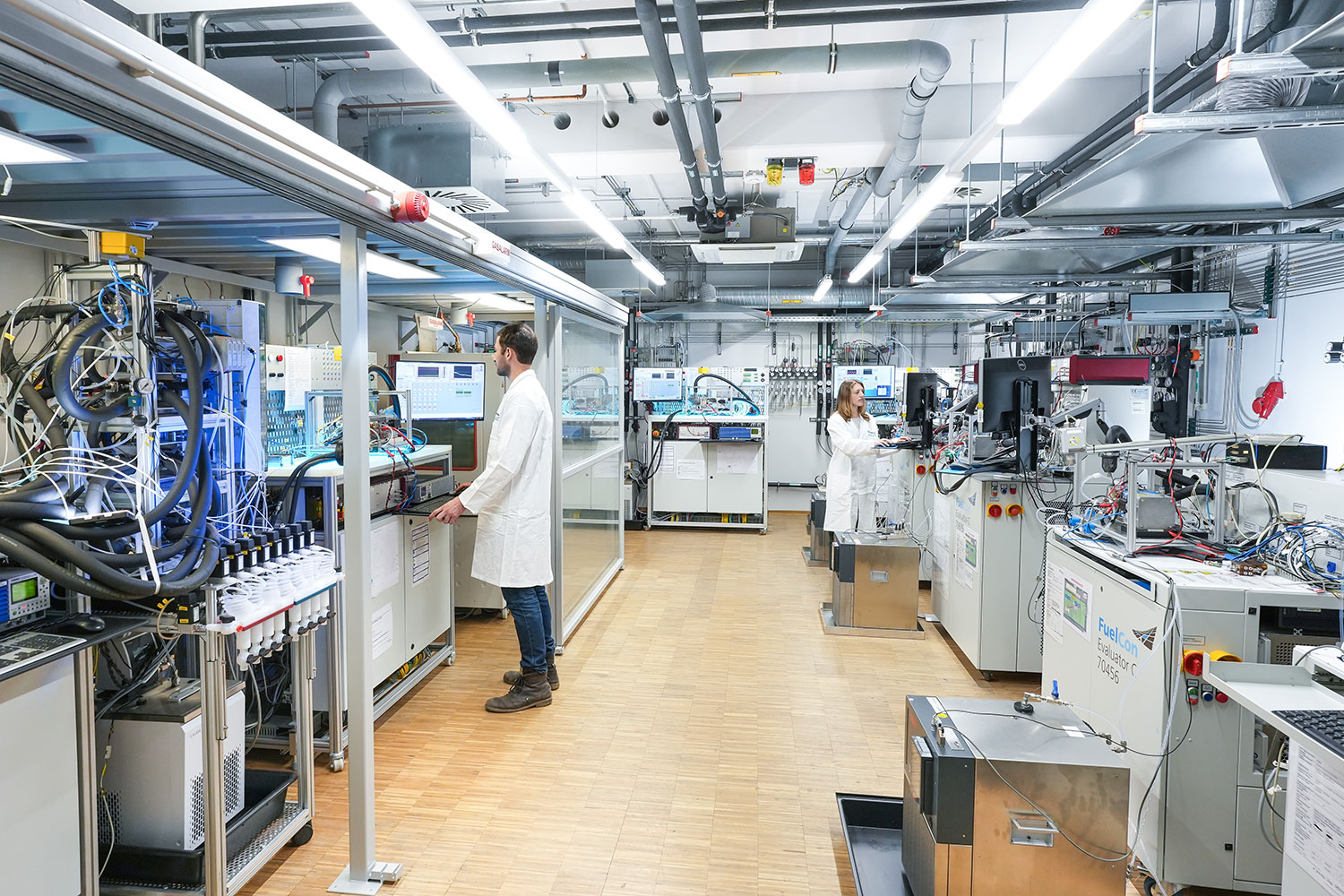Climate-neutral industrial processes
The majority of greenhouse gas emissions from industrial processes are generated in the raw materials industry. This includes metal production, the manufacture of mineral products and the production of basic chemicals. The strategy for achieving climate-neutral production differs depending on the industry.
In the steel industry, the use of hydrogen in a direct reduction process can decrease CO2 emissions in crude steel production by up to 95% compared to the conventional blast furnace method. This has already been demonstrated by Fraunhofer IKTS as part of the MACOR project (funded by the German Federal Ministry for Education and Research (BMBF) in cooperation with the ISI and UMSICHT institutes and Salzgitter AG. This emission reduction is possible if renewable energies are used to provide both the required hydrogen (via electrolysis) and the electrical energy for the electric arc furnaces. The high-temperature electrolysis process is particularly promising for hydrogen production. Demonstrators for this technology are already in use on a scale of 100 kilowatts. Transfer to the gigawatt scale is now planned.
In the BMBF-funded follow-up project BeWiSe, the above-mentioned Fraunhofer institutes are working with Salzgitter AG on the question of how hydrogen-based crude steel production can be successfully implemented in the ongoing operation of the steelworks. Here, both the experimental principles of iron ore reduction and the material and energy balances at the steelworks are considered holistically, as well as the question of acceptance of structural change at the site. Residual emissions in steel production can be avoided through the use of carbon dioxide capture and utilization (CCU) processes, as can the emission of process-related CO2 in lime and cement production and thermal waste treatment.
The CO2 is captured using processes such as amine scrubbing or ceramic membranes. Together with »green« hydrogen, a synthesis gas is produced that can be used in the chemical industry to produce key basic chemicals such as methanol. The implementation of this process chain is being demonstrated by Fraunhofer UMSICHT and its project partners in the BMBF-funded project Carbon2Chem®. In the WaTTh project, Fraunhofer IKTS is constructing a fully automated demonstration plant based on its own high-temperature co-electrolysis process, in which liquid hydrocarbons and waxes are produced from CO2 and water using Fischer-Tropsch synthesis. These materials can be used in the chemical industry and in the production of synthetic fuels such as e-kerosene. The plant capacity is 8 liters of liquid products and waxes per day. Using tools developed for process simulation, the researchers are currently working to scale up the processes to industrial scale.
Emission-free power and heat generation
Due to the volatility of sun and wind, dynamically controllable power plants will be needed in the future: hydrogen-gasfired power plants are ideal for large outputs in the range of megawatts to gigawatts. Hydrogen-compatible turbines are already being installed today. Beside technology and market studies, Fraunhofer offers material developments, testing and production technologies. Use of hydrogen Use of hydrogen For lower outputs, combined heat and power plants based on fuel cells or hydrogen combustion engines are a promising option, as high overall efficiencies for electricity and heat can be achieved.
In this field, Fraunhofer can provide support with system simulations and tests from the material through to the system level. In the field of industrial process heat supply, the use of hydrogen can be an option especially for higher temperature requirements and for processes that are difficult to electrify directly. Fraunhofer UMSICHT has carried out bottom- up analyses to compare electrification and the use of hydrogen for industrial process heat in various sectors, for example in the short study »Decarbonization of industrial process heat in energy-intensive SMEs« for the Gelsenkirchen climate port.
Sustainable traffic and transport
Future mobility must be made possible without fossil fuels. Hydrogen technologies can complement battery-electric drive concepts in many areas: fuel cells supply the electricity for electric powertrains, while renewable fuels minimize vehicle emissions from combustion engines. One thing all hydrogen technologies have in common is high energy densities in the tanks, enabling long ranges with the short refueling times we are accustomed to today. In addition, the vehicles are refueled at standard public filling stations, regardless of where and when the electricity is generated.
The Fraunhofer institutes offer comprehensive R&D services for material, component and system development, experimental characterization, modeling and simulation, techno- economic studies for fuel cells, electric drive systems and combustion engines, e-fuel production, filling stations and vehicles. Fraunhofer UMSICHT develops film-based composite bipolar plates for fuel cells as well as gasket-free cell and stack concepts. In the projects »BiFoilStack – Development of stack designs for NT-PEM fuel cells with novel compound bipolar films« and »H2GO – national fuel cell production action plan«, Fraunhofer UMSICHT is researching this new and potentially disruptive technology along the entire production chain. The focus is on the development of semi-finished products and system components as well as innovative, weldable cell and stack concepts.

